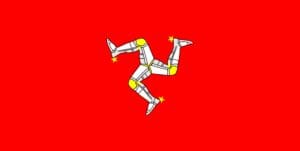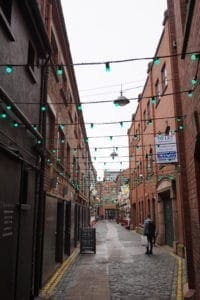The Sheela-na-Gig: Unveiling the Enigma of Feminine Stone Symbols
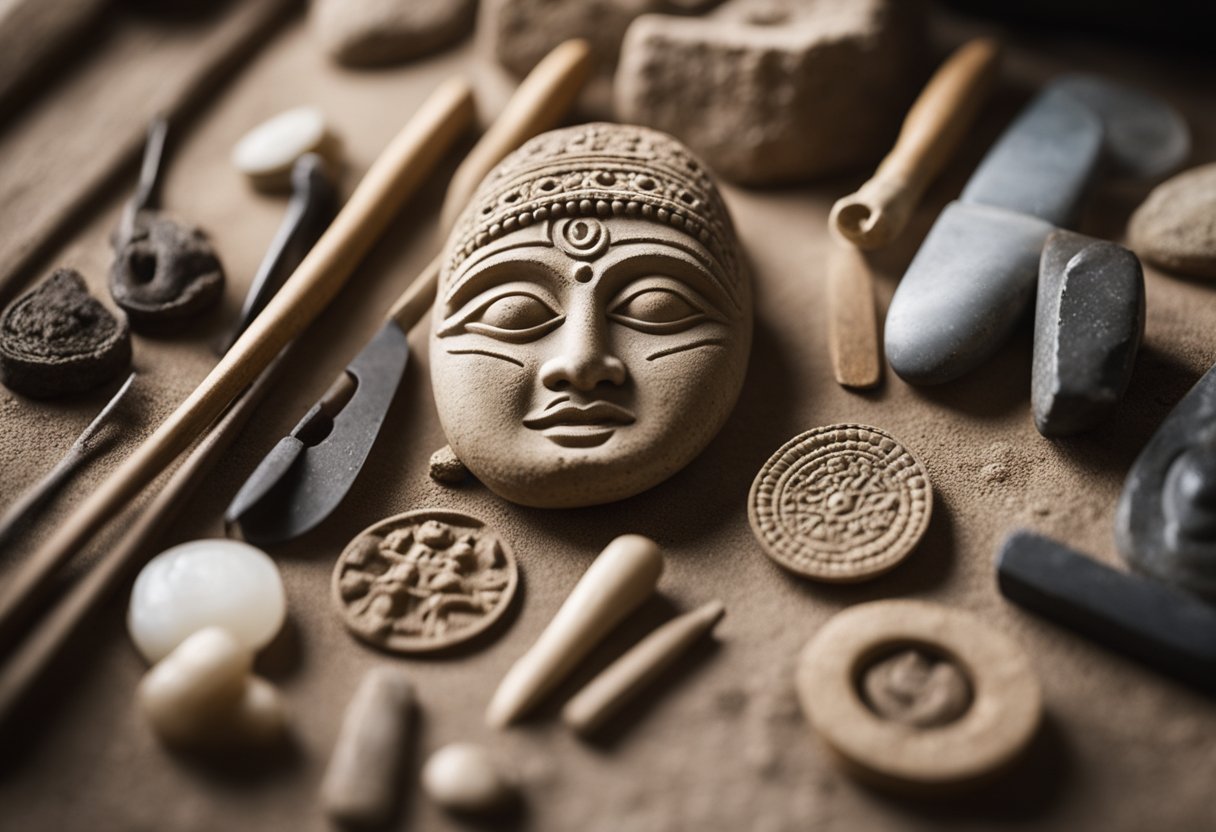
Updated On: April 21, 2024 by Maha Yassin
Across Ireland and parts of Europe, enigmatic stone carvings known as Sheela-na-Gigs continue to pique curiosity and debate among historians, archaeologists, and the public. Sheela-na-Gigs are typically medieval stone reliefs depicting female figures with prominently displayed genitalia. Despite their historical roots, these carvings’ exact purpose and meaning remain largely speculative, with various interpretations proposed over time.
Our understanding of Sheela-na-Gigs has evolved, potentially symbolising fertility, warding off evil, or challenging societal conventions around female sexuality and power. These carvings are predominantly found in churches, castles, and other historical structures across Ireland and in other European countries. The unique nature and distribution of Sheela-na-Gigs raise intriguing questions about their connection to wider religious practices and the role of gender during medieval times.
Historical Context and Origins
The Sheela-na-Gig figures are a compelling mystery from history, symbolising feminine power cast in stone. Their origins elude definitive explanation, but they remain significant artefacts from medieval Europe, rich in cultural and historical value.
Medieval Churches and Structures
Sheela-na-Gigs are most commonly found adorning medieval churches and castles’ outer walls and towers, primarily dating back to the 12th century. These striking stone carvings typically represent nude women with exaggerated genitalia. They appear predominantly in Europe, especially in Ireland and Britain. Structures from the Romanesque period often feature such carvings, embodying the era’s architectural characteristics with rounded arches and robust form. The precise purpose of these figures within ecclesiastical contexts remains debated, but theories suggest roles ranging from protecting against evil to embodying fertility.
Comparative European Presences
Although most prolific within Irish settings, the Sheela-na-Gig phenomena are not confined to Ireland alone. Similar figures and motifs can be identified across Europe, suggesting a shared cultural or spiritual heritage. Their comparative presence in European countries indicates a certain pan-European medieval zeitgeist encompassing religious and secular domains. From 12th-century adornment of churches to their occasional appearances on secular buildings such as castles, these carvings stand as a testament to a time when symbolism was deeply intertwined with the fabric of society.
Symbolism and Interpretation
Sheela-na-gigs are enigmatic stone carvings featuring female figures prominently displaying their genitalia. Found in medieval churches and castles, they invite a multifaceted interpretation, whether as symbols of fertility or as warnings against sin.
Fertility and Protection
The exaggerated vulva of the Sheela-na-gig is often considered a potent symbol of fertility. These carvings might represent a connection to ancient earth goddesses, echoing nature’s regenerative powers. In some interpretations, the Sheela-na-gigs are thought to offer protection against evil, guarding the buildings upon which they are found with their life-creating symbolism.
Exhibitionist and the Sin of Lust
In stark contrast to the nurturing aspects of fertility, Sheela-na-gigs are also interpreted as exemplary figures. Their exhibitionist pose could be reflective of the sin of lust, conveying a stark message on the nature of carnal desire. These figures might serve as a moral lesson to those entering sacred or significant places, reminding onlookers of the perils of succumbing to base instincts.
Geographic Distribution and Prominent Locations

We observe that Sheela-na-Gig carvings, known for their intriguing depiction of the feminine, are predominantly found within Ireland and Britain, having also spread across various European regions.
Ireland and Britain
In Ireland, the greatest concentration of Sheela-na-Gig stone carvings is present. Notably, Tipperary hosts remarkable examples, inviting both admiration and curiosity. Britain, too, shares a wealth of Sheela-na-Gig figures, with England boasting distinguished specimens. The carvings in Scotland and Wales may be fewer, but their contributions to the overall understanding of these symbolic artefacts are no less significant.
Spreading Across Europe
Beyond the shores of Britain and Ireland, Sheela-na-Gig carvings extend into Spain and other territories in Western and Central Europe. Their scattering across the continent suggests a broader cultural significance transcending regional boundaries, hinting at a pan-European recognition of their inherent value or function.
Religious and Mythological Connections
Our exploration of Sheela-na-Gig carvings reveals deep roots intertwined with both pagan and Christian traditions, touching on aspects of goddess worship and ecclesiastical heritage.
Paganism and Christianity
Sheela-na-Gig figures are most often found in Roman Catholic churches and ecclesiastical sites. This curious placement has led some to believe they served as a Christian warning against sins of the flesh. Yet, their origins and representations may point to a pagan history where the figures depict ancient goddesses or symbolise fertility and protective functions, telling of a time when both pagan and Christian narratives coexisted and merged as Christianity spread across pagan landscapes.
Folk Deities and Local Legends
Local legends often imbue Sheela-na-Gig figures with the attributes of folk deities or representations of the Cailleach, the crone of Celtic mythology signifying wisdom and the changing seasons. These carvings could represent a bridge between the older pagan practices of the lands and the newly established Christian theology, embedding older cultural tenets within the fabric of Christian ecclesiastical structures. At the intersection of these beliefs, Sheela-na-Gig carvings capture a profound mix of the ancient and the ecclesiastical, challenging the simplistic categorisation and inviting us to understand the nuanced incorporation of differing religious practices.
Sheela-na-Gig in Art and Literature
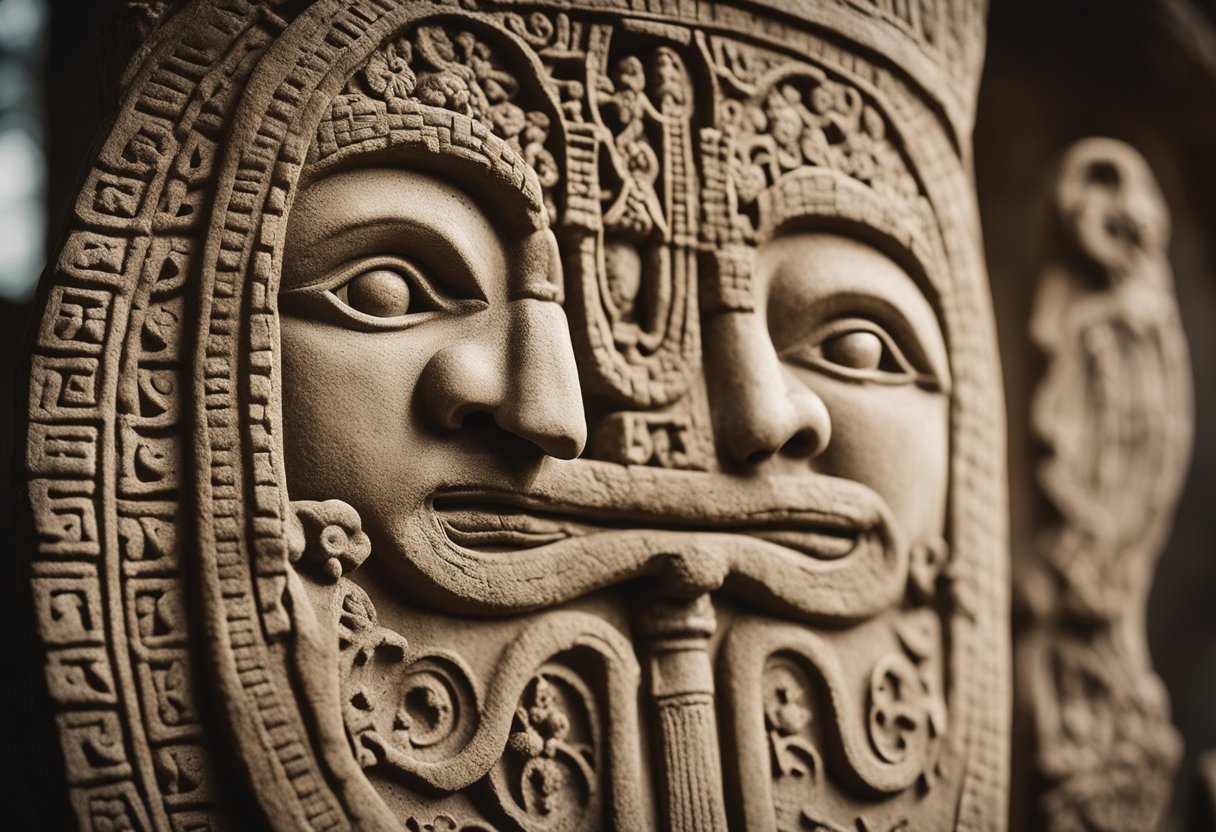
Sheela-na-Gig figures have inspired considerable interest and interpretation in academic and artistic circles. Our exploration delves into the intellectual and creative responses to these enigmatic stone carvings.
Literary Analyses
Sheela-na-Gigs have been subjects of scholarly scrutiny, with authors like Barbara Freitag dissecting their cultural and historical significance. In her work “Sheela-na-Gigs: Unravelling an Enigma”, Freitag engages with various theories, striving to understand these carvings beyond their shock value, proposing they may convey messages about fertility and the divine feminine.
Jorgen Andersen provided another key voice with his interpretations of these figures. His analyses suggest that Sheela-na-Gigs might hold a protective function or represent a form of medieval humour or satire observed in a religious context, challenging views that confine them to any single meaning.
Artistic Representations
Artists have found rich inspiration in Sheela-na-Gigs, incorporating the motifs into contemporary works that question and celebrate femininity. These carvings, often located in ecclesiastical settings, have been reimagined through various artistic lenses, ranging from respectful homage to provocative critique.
Contemporary artists reimagine these figures in a variety of media, each artist adding a unique perspective that can alter our understanding or appreciation of the original stone carvings. They continue to shape modern perceptions of historical representations of female power and sexuality.
Debates Around Purpose and Message
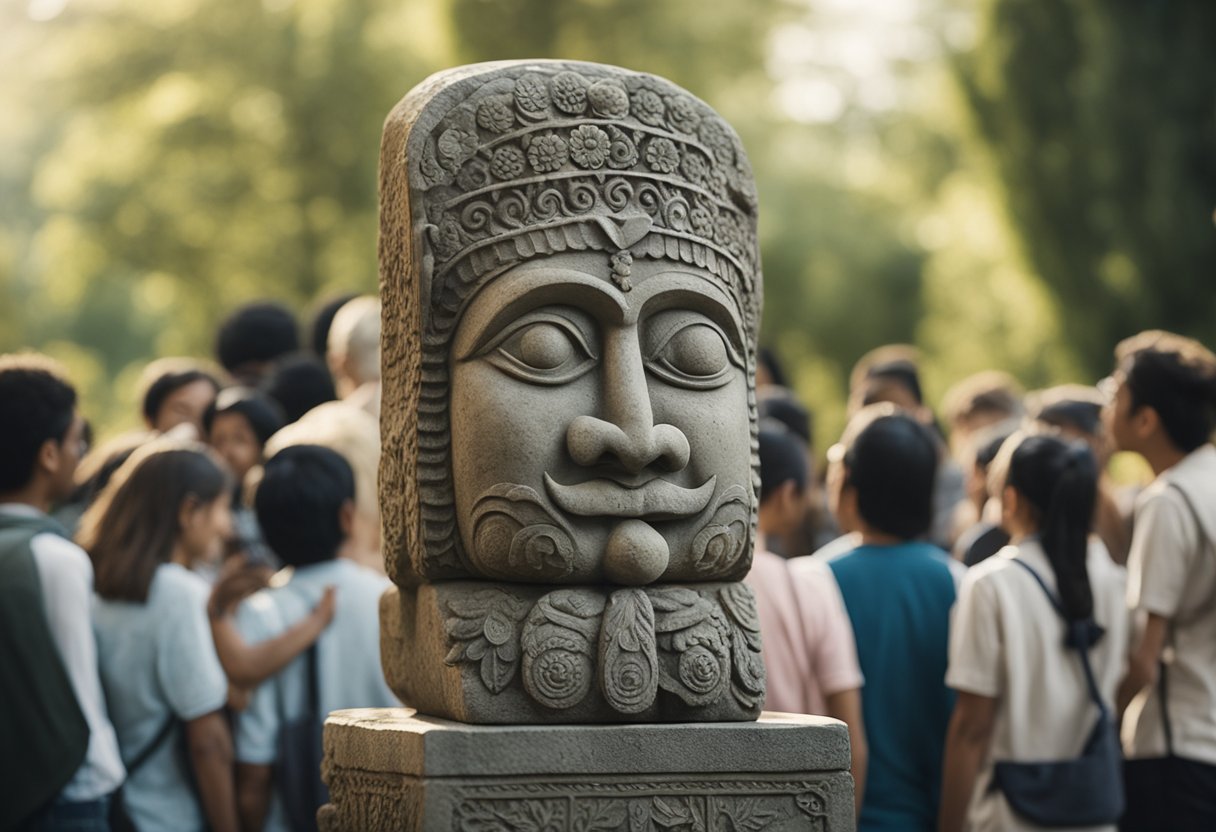
Before we examine the varying theories concerning Sheela-na-gigs, it is important to acknowledge the complexity of these carvings and the intensity of the debates they have sparked. The crux of these discussions centres on the carvings’ intended purpose and the message they were meant to convey.
Academic Perspectives
Academics have long studied Sheela-na-gigs, yet they have reached no consensus regarding their original purpose. Some scholars suggest that these carvings may have served as warnings against lust or as representations of sin, yet others view them as symbols of fertility or the embodiment of a pre-Christian goddess. Indeed, the academic community is divided, with interpretations ranging from the divine to the exemplary. The lack of definitive historical data renders the Sheela-na-gigs’ purpose open to speculation.
Evil Eye and Protective Theories
Conversely, a prominent theory posits that the Sheela-na-gigs might have been intended to protect against the evil eye – a malevolent glare believed to cause harm. This interpretation aligns with the idea that grotesques, including Sheela-na-gigs, were often positioned on churches and castles as apotropaic symbols – designed to ward off evil. Some also see a feminist reclaiming of the Sheela-na-gigs, interpreting the figures as powerful icons of female autonomy and spirituality. These carvings serve multiple potential functions—from the magical to the emancipatory.
The Role of Gender and Sexuality
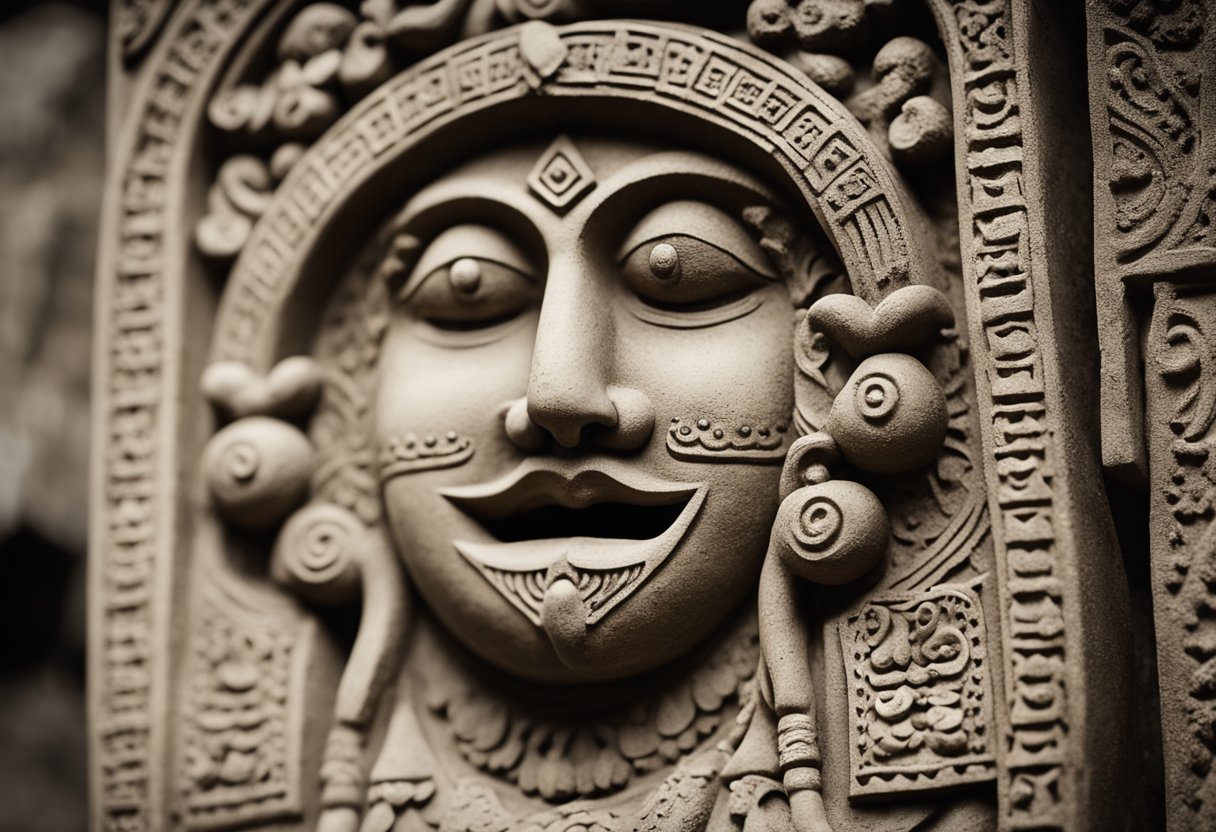
Sheela-na-Gigs symbolises the complex intersection of gender and sexuality in historical and cultural contexts. These carvings provide an invaluable glimpse into past perceptions of femininity and female power.
Representation of Female Sexuality
Sheela-na-Gig figures are distinctive due to their explicit depiction of the naked female form with an emphasis on the genitalia. This clear representation of female sexuality is uncommon in medieval iconography, particularly among ecclesiastical sites. Often posed with the vulva prominently displayed, these carvings challenge the traditional modesty associated with female sexuality of the time.
Historical Views on Feminine Power
Sheela-na-Gigs were created in a historical context where feminine power was frequently underrepresented or suppressed. The presence of these carvings on religious buildings has led to considerable debate among scholars. Are these figures meant to convey a warning against lust, or are they remnants of pre-Christian fertility or protective symbols that celebrate feminine strength? These enigmatic stone figures continue to provoke discussion regarding historical views on feminine power and the evolving perceptions of women’s societal roles.
Archaeological Evidence and Conservation Efforts

In addressing the Sheela-na-Gig carvings, considerable significance has been given to their archaeological context and the persistent efforts to conserve these enigmatic figures. Conservation encompasses physical preservation and the cultivation of understanding about their origins and roles within history.
Restoration and Preservation
Sheela-na-Gig carvings, often dating back to the 12th century, have undergone restoration to mitigate centuries of exposure to the elements. These stone carvings carry immense historical value, prompting conservationists to employ meticulous techniques to halt deterioration. Collaborations between archaeologists and restoration experts are integral to this process, ensuring that interventions are sympathetic to the original craftsmanship.
National and Local Heritage Initiatives
At a national level, the Heritage Council of Ireland has been instrumental in spearheading initiatives to protect Sheela-na-Gig carvings. These figures are recognised by the National Monuments Service, which catalogues such artefacts to aid in their conservation. Local heritage programmes also play a vital role, often involving community engagement to raise awareness and funding for ongoing conservation efforts.
Public Perception and Modern Relevance
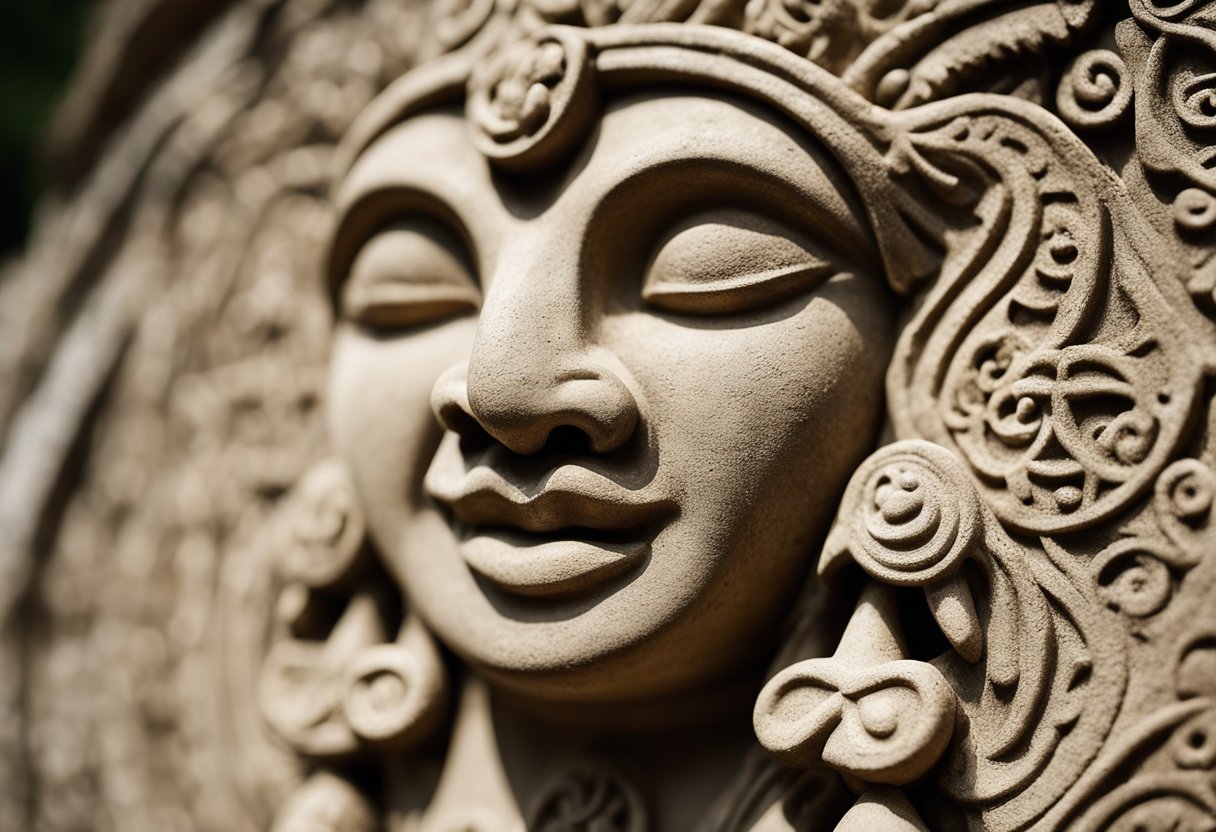
Sheela-na-Gig figures have seen a marked change in public perception, playing a significant role in tourism, heritage, and feminist reinterpretation.
Cultural Identity and Tourism
Ireland’s Sheela-na-Gig carvings have become emblematic of the nation’s cultural identity, inextricably linked to the legacy of its medieval past. For tourists, these carvings are a window into ancient Irish traditions and revered as heritage artefacts. Cultural tourism is bolstered by the allure of Sheela-na-Gigs, which attracts visitors keen to explore the country’s rich historical tapestry. The mapping of these carvings contributes to a structured exploration of Ireland’s historical sites, enabling tourists to gain a multi-faceted understanding of Irish culture.
Contemporary Feminist Reappraisal
Feminists have reclaimed Sheela-na-Gigs as a symbol of female empowerment and the challenging of traditional norms. The carvings are often celebrated for their open display of female sexuality, a stark contrast to the more conservative depictions from the same time. Academic commentary suggests that Sheela-na-Gigs are a source of inspiration for contemporary Irish art, aligning with modern feminist movements that emphasise body positivity and autonomy. This reinterpretation sparks dialogue on the representation of women throughout history and in current society.
Resources and Further Study
This section presents avenues for deepening your understanding of Sheela-na-Gig figures. We focus on tangible materials found in museums and exhibitions and comprehensive literature that spans both print and digital formats.
Museums and Exhibitions
For those keen on observing Sheela-na-Gig carvings firsthand, visiting museums and exhibitions is indispensable. These institutions provide a real sense of the artefact’s texture and presence:
- British Museum, London: Home to a diverse collection, it sometimes features Sheela-na-Gig figures.
- Ireland’s National Museums: They occasionally host exhibitions that include Sheela-na-Gigs, among other medieval artefacts.
In addition to visiting museums, you can locate these historic carvings using an interactive map that guides you to Sheela-na-Gig statues across Britain and Ireland.
Books and Online Publications
For those who wish to delve into scholarly research, many books and online resources are available:
- Sheela-na-gigs: Unravelling an Enigma by Barbara Freitag provides a comprehensive study in many libraries.
- The academic work Decoding the Sheela-na-gig by Georgia Rhoades can enhance your scholarly insight.
- A digital resource that might be of interest is Wikipedia, which offers an overview of Sheela-na-Gig and references for further reading.
- Britannica also provides a detailed entry, though relying exclusively on it might not capture the full spectrum of recent scholarship.
For a more visual exploration, online platforms such as museums’ websites often feature archives and magazine articles detailing past exhibitions.
Each of these resources can contribute significantly to our knowledge of Sheela-na-Gig, whether one is an academic, historian, or just someone with a keen interest in medieval iconography and feminine symbology.
Frequently Asked Questions
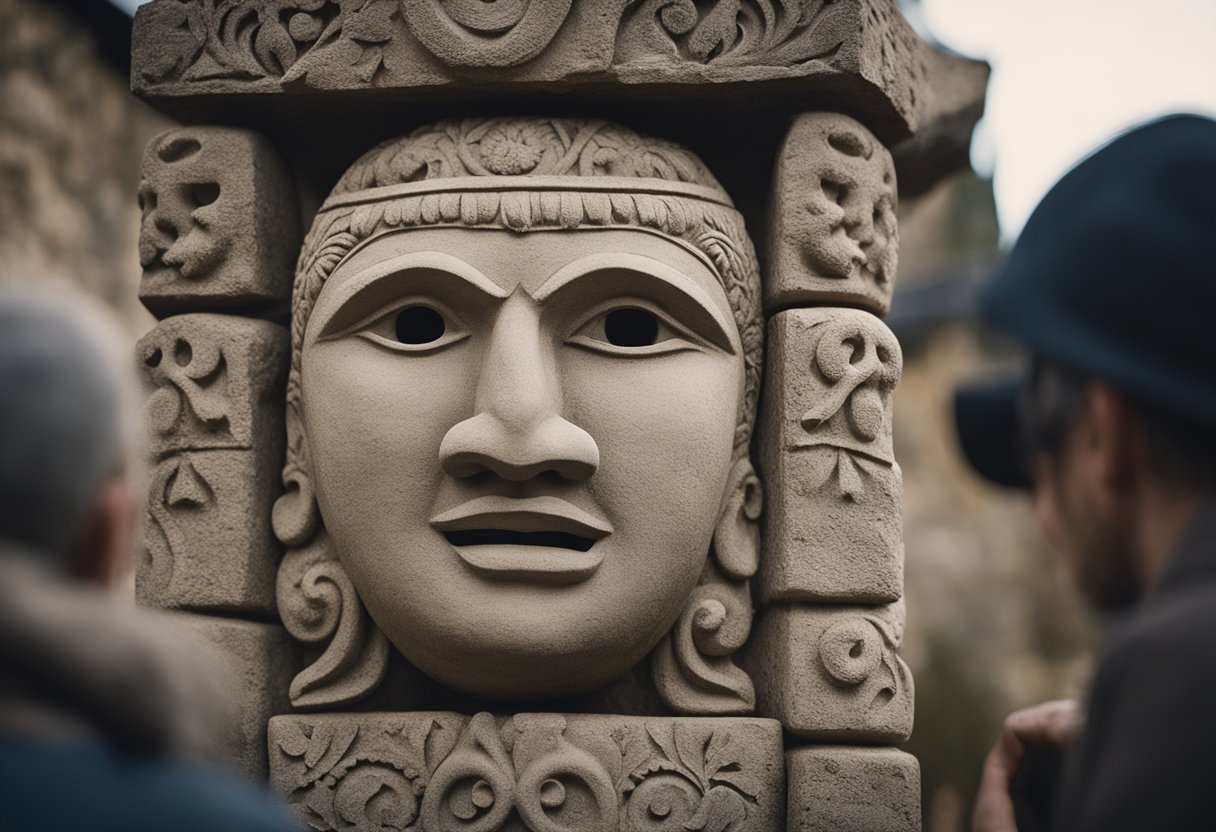
This section addresses the most common curiosities regarding the enigmatic Sheela-na-Gigs. These carvings, often found on historical sites, have perplexed and fascinated observers for generations.
What symbolism do Sheela-na-Gigs carry in their iconography?
Sheela-na-Gigs are typically represented by figures of women exposing their genitalia, suggesting themes of fertility and regeneration. The explicit nature of these carvings has led to various interpretations connected to ancient goddess worship and the cycle of life and death.
How did Sheela-na-Gigs originate, and what is their historical context?
The origin of Sheela-na-Gigs is shrouded in mystery, but they are believed to date back to the 11th century and are most commonly found in Ireland and Great Britain. These carvings may have functioned as protection symbols, warding off evil, or as moral warnings in their historical context.
Can you explain the association of Sheela-na-Gigs with churches and religious structures?
Despite their seemingly pagan imagery, Sheela-na-Gigs are found in churches and religious structures, suggesting a complex relationship with Christianity. They may have been incorporated into church buildings to assimilate or overwrite pre-Christian beliefs, or they could have been used to convey warnings about the dangers of lust and sin.
Are there any specific myths or folklore surrounding Sheela-na-Gigs?
Specific myths directly tied to Sheela-na-Gigs are rare but often fall within broader narratives of earth goddesses and divine female power. As many of these figures are unlabelled and found in isolation, their stories are more often deduced from the common themes surrounding their symbolism.
In what ways do Sheela-na-Gigs connect with the concept of feminine power?
Sheela-na-Gigs may symbolise ancient female deities and the power of women in life’s cycles, embodying childbirth, fertility, and sexual sovereignty. Their unabashed display can be seen as an assertion of strength and a challenge to the male gaze.
How have interpretations of Sheela-na-Gigs changed over time?
Interpretations of Sheela-na-Gigs have evolved, with early readings often considering them as figures of sin or lust. In contemporary analyses, they are sometimes seen as feminist icons, representing female empowerment and reclaiming women’s bodies in historical narratives.




